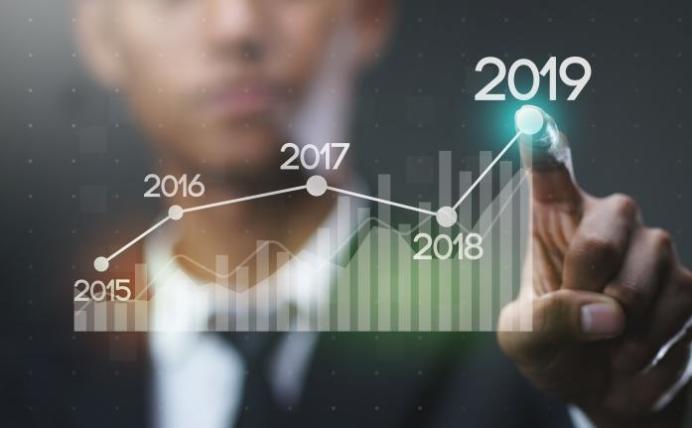
Here’s a sobering thought for sales professionals (and everyone else): This decade has only one more year left in it.
It’s true. The second decade of the twenty-first century is approaching its finish line. As it does, sales as a profession is going through a period of extraordinary change. In this post, we will look at some of the biggest changes on the horizon for salespeople. In the next post, we will look at some equally important changes that sales managers are facing as we approach 2019.
A recent survey from Salesforce.com suggested that no less than 57% of all sales people anticipate that they will not make quota in the coming year. That’s a troublingly high number, one that seems to be rising as time goes by. Why is this kind of uncertainty happening? Two big factors come to mind. First: Fewer and fewer managers have the tools, training and reinforcement they need to effectively support salespeople. And second: Salespeople are finding they don’t have all the resources they need to compete at the top of their game and keep up in rapidly-changing markets. With those challenging factors in mind, here are three trends that I predict that the most successful salespeople will be noticing and taking advantage of in 2019… and beyond.
TREND ONE: SELF-MANAGEMENT BEATS NO MANAGEMENT. At many companies, there are few (or perhaps even no) senior leaders who have been trained and reinforced in the effective supervision, mentoring, and coaching of the sales team members. This is apparently the new norm. For better or for worse, the most successful sales producers will be those who recognize that they now live in a sink-or-swim environment. These people will take on personal responsibility for their own personal and professional development will decide to own the job of figuring out for themselves what does and doesn’t work. This is in terms of both prospecting (see Trend Two, below) and managing the overall sales process. The upside here is that some salespeople will rise to the challenge, take on a truly entrepreneurial mindset, keep up with all that astonishing technological changes on their own (see Trend Three), and make truly extraordinary contributions. The downside of this trend for company leaders and the majority of the sales team, is that not everyone is ready for self-management. Many promising contributors are left to fend for themselves will eventually seek opportunity (and support) elsewhere.
TREND TWO: PROSPECTING BECOMES INCREASINGLY MULTI-TIERED… AND INCREASINGLY DIGITAL. Once upon a time, making cold calls on the phone, showing up for networking events, and engaging effectively in person with happy clients could serve as the pillars of an effective business development “cookbook.” Of course, all three of those things are still important pieces of the puzzle, but now, the puzzle has a lot more pieces. The most effective salespeople we’re working with have adopted three best practices when it comes to prospecting. First: Rather than focusing on creating and sending one email message at a time, they’re creating a whole suite of targeted messages that can go out to inactive contacts on a “drip” basis that’s more reminiscent of a digital marketing campaign. (At the same time, these salespeople are staying on the right side of current anti-spam and data protection laws.) Second: They’re leveraging LinkedIn and other social media channels as a powerful source for generating referrals. Third: they’re realizing that all the different elements of a prospecting campaign (both digital and traditional) must work together over time. Bottom line: Various forms of digital communication are going to be critical parts of the effective prospecting “cookbook” in 2019. For more on this, see the upcoming book from Sandler, MASTERING DIGITAL PROSPECTING: A PRIMER FOR SALES PROFESSIONALS.
TREND THREE: THE BEST CONVERSATIONS AND HIGHEST CLOSING RATIOS WILL GO TO THE PEOPLE WITH THE COOLEST TOOLS. Major competitive advantages will go to salespeople who spot and sign on with the most powerful new platforms and applications. Some of which, deliver data-driven insights that are nothing short of awe-inspiring. What kind of platforms and applications am I talking about? Glad you asked. One example of a truly game-changing tool that you’ll definitely want to master before your competition does is Crystal. Crystal is a chrome plugin for LinkedIn users that accurately predicts the personalities and behavioral styles of prospects and customers without you ever having met them. Crystal positions you to send more effective digital messaging, accelerates the process of creating trust in the relationship, and points you toward more persuasive discussions on LinkedIn and elsewhere – all from a distance without a face-to-face or voice-to-voice conversation. Is that really possible? Short answer: Yes. I wouldn’t have believed it, either, but I have seen Crystal in action, and this really is where technology has landed us as 2019 approaches. Other examples of cool digital tools that can give you an edge in our increasingly smart, increasingly digital selling environment include Gong (which helps you keep track of conversations with buyers and analyze what was said) and VisualizeROI (which helps you create visual models that convey the value you add in a compelling way). There are many others, but these three are an excellent place to start.
So, that’s my take on where sales is going for salespeople as this extraordinary decade draws to a close. Next week, we’ll look at the future of sales management in 2019.
For more information, contact us!

